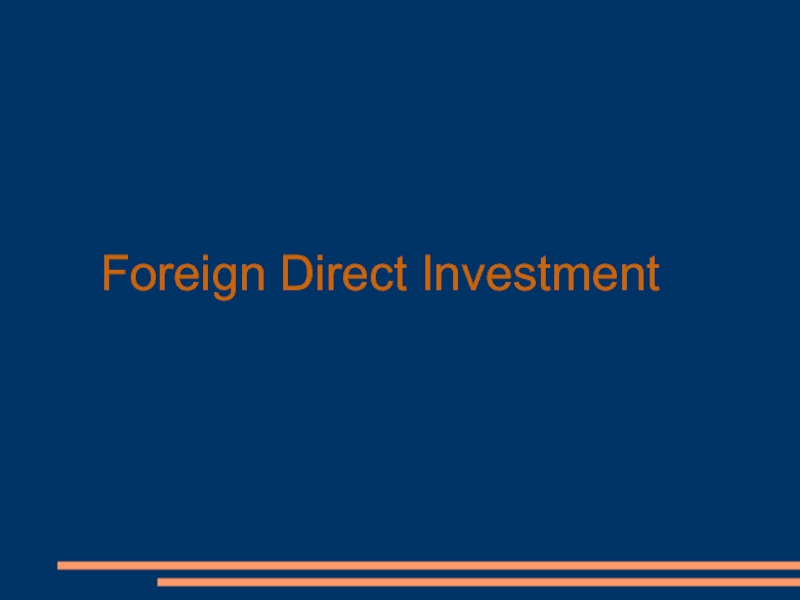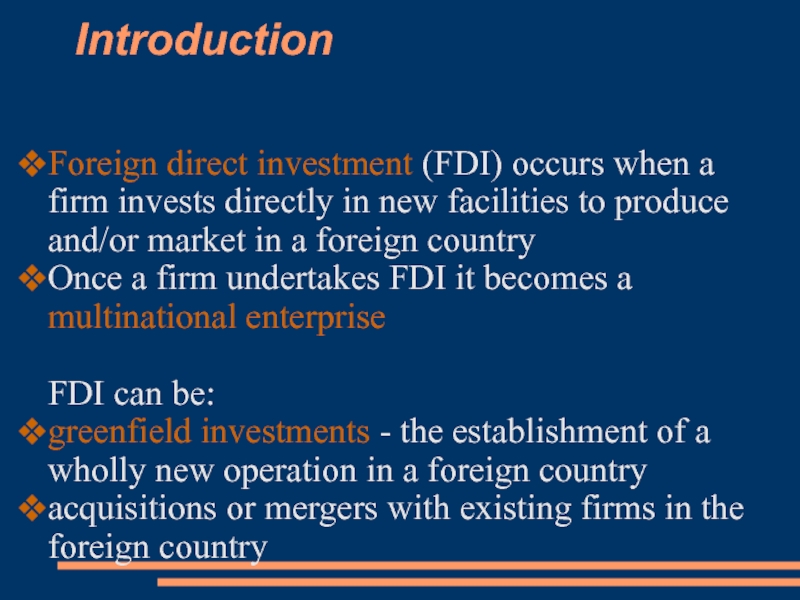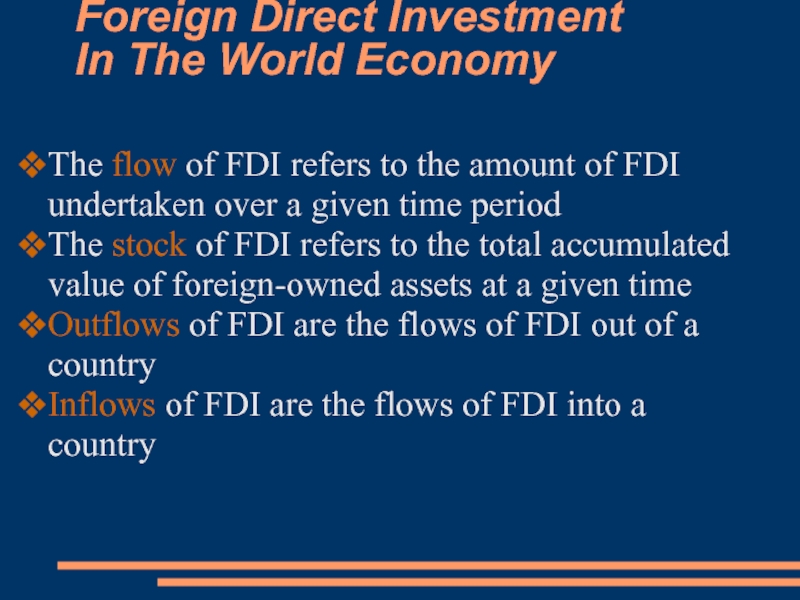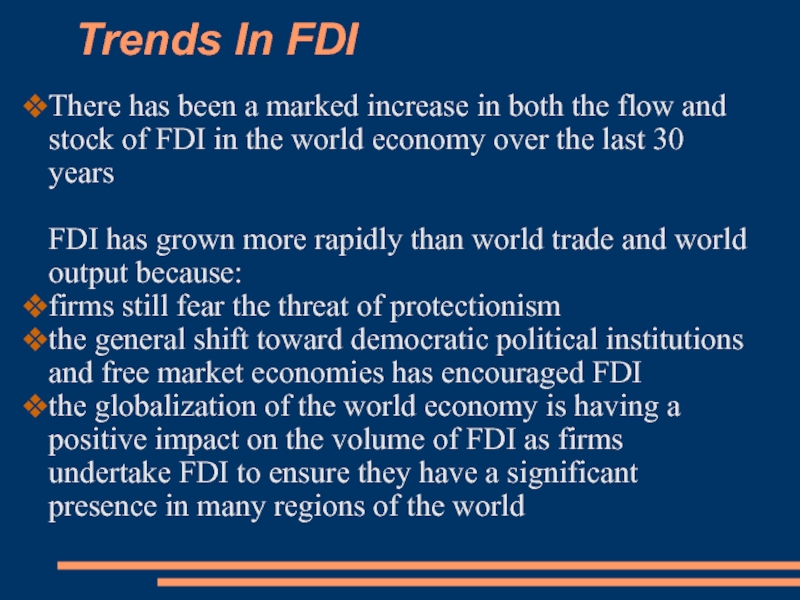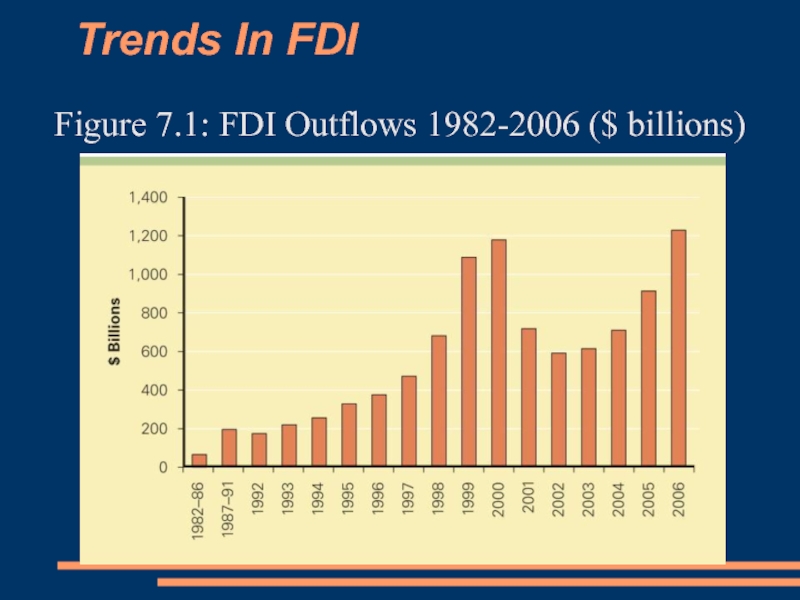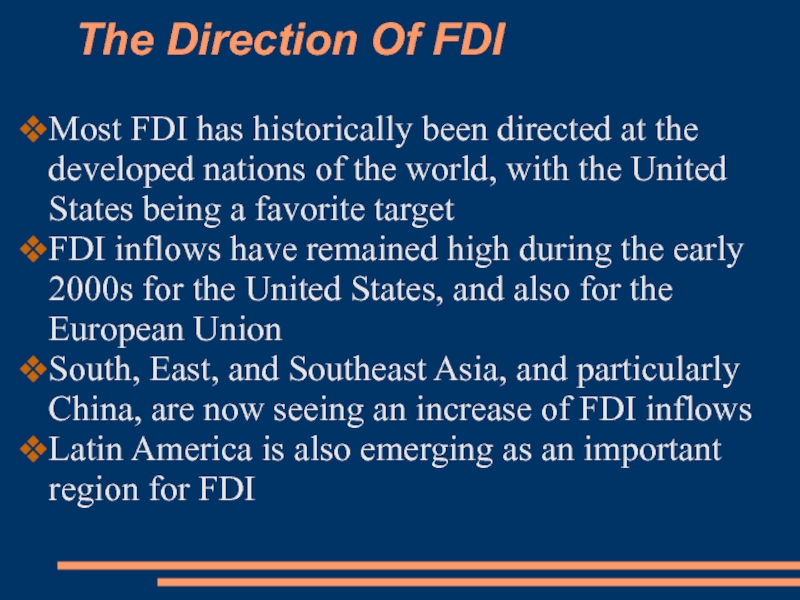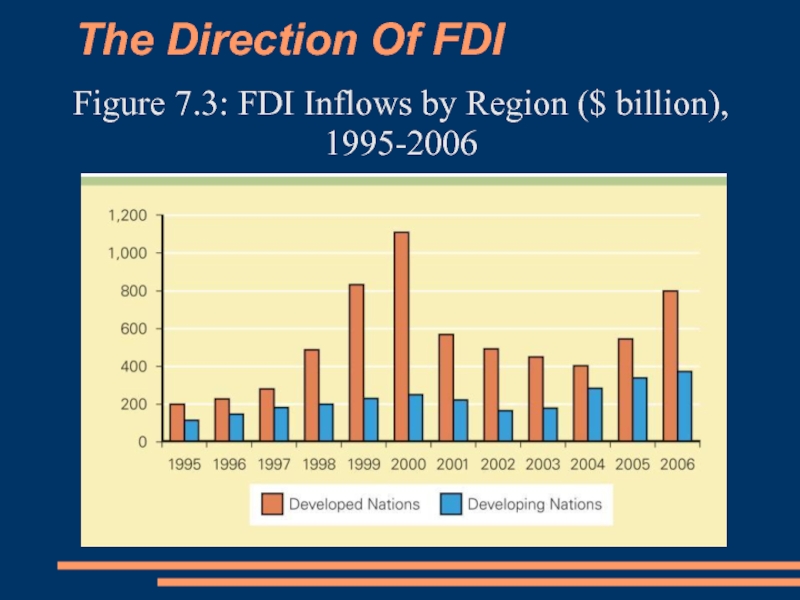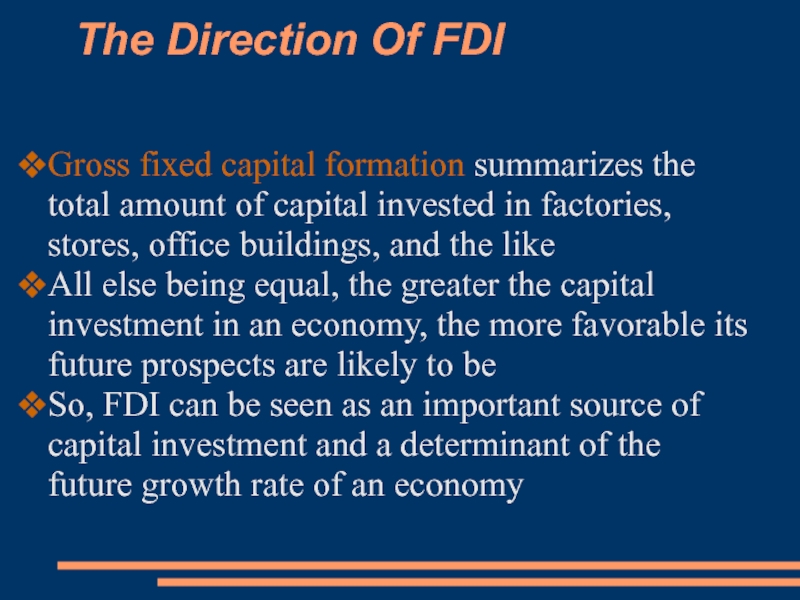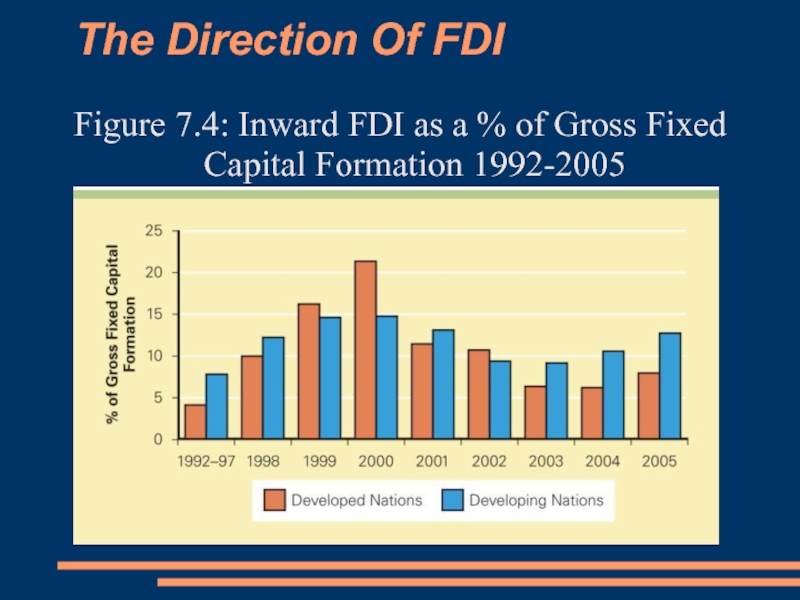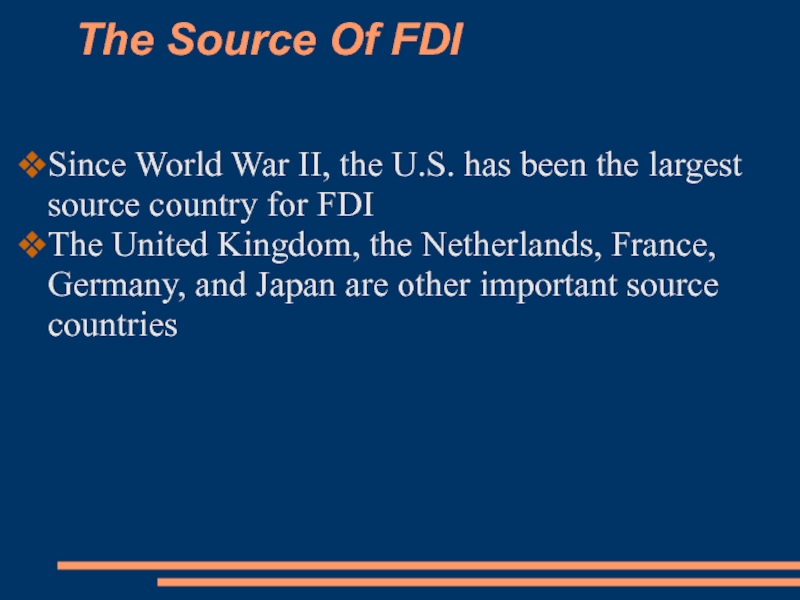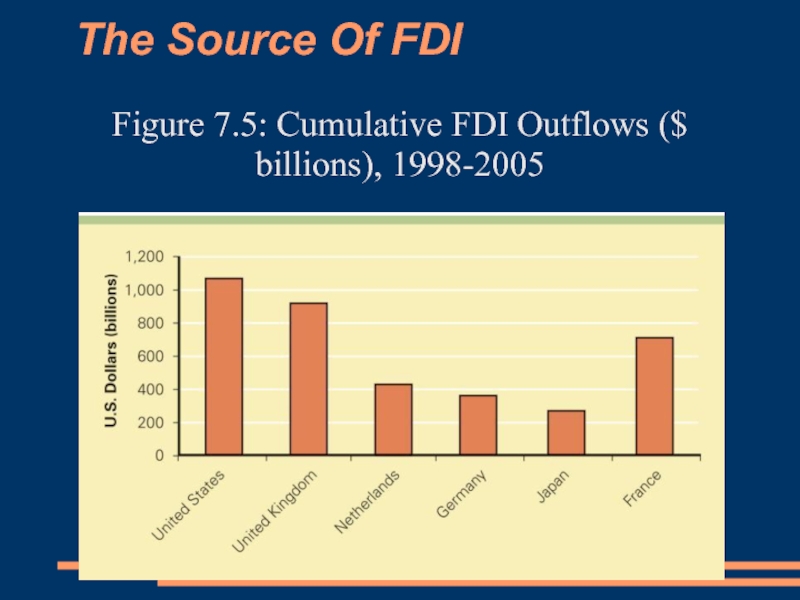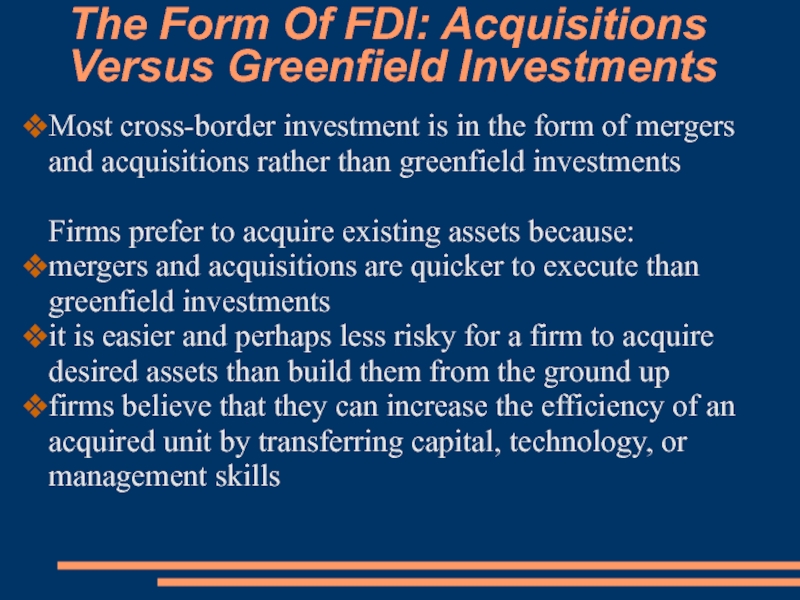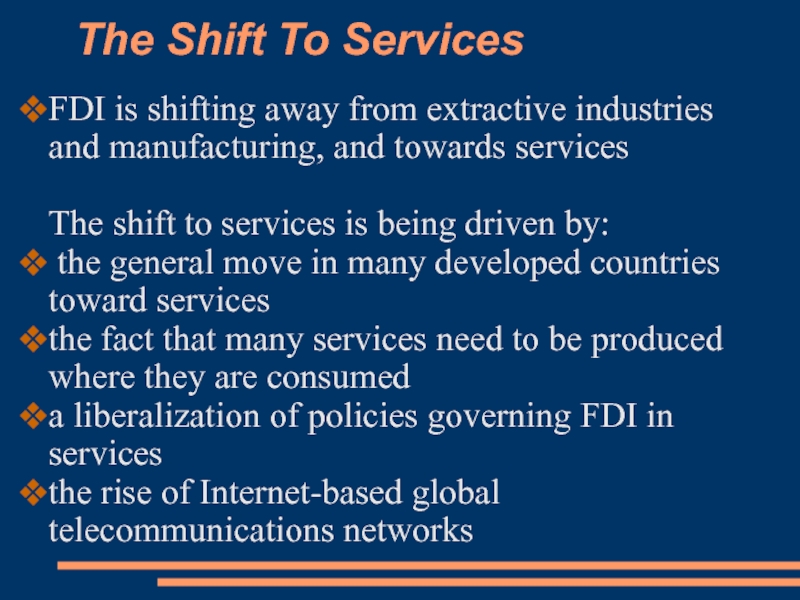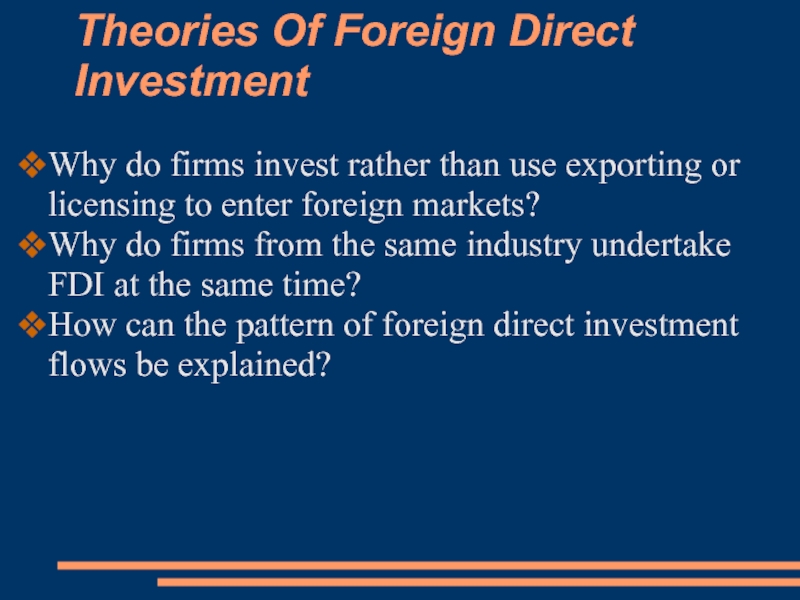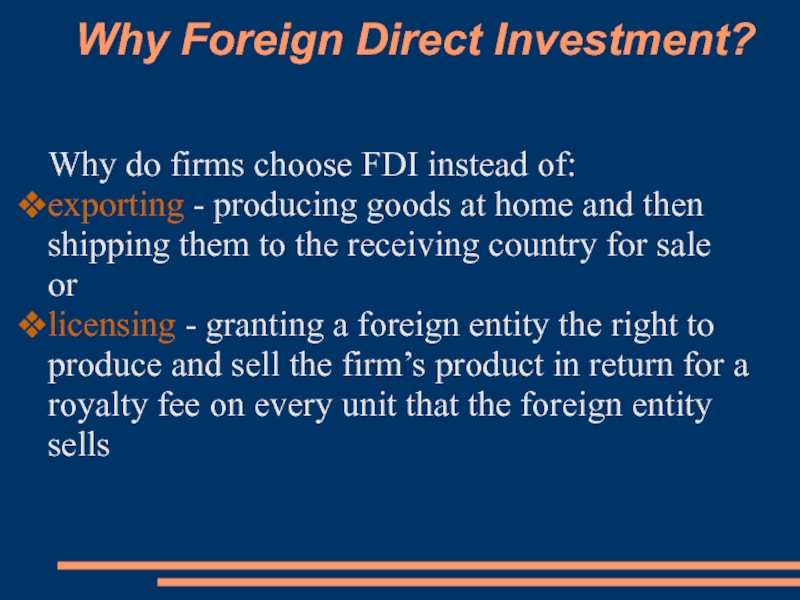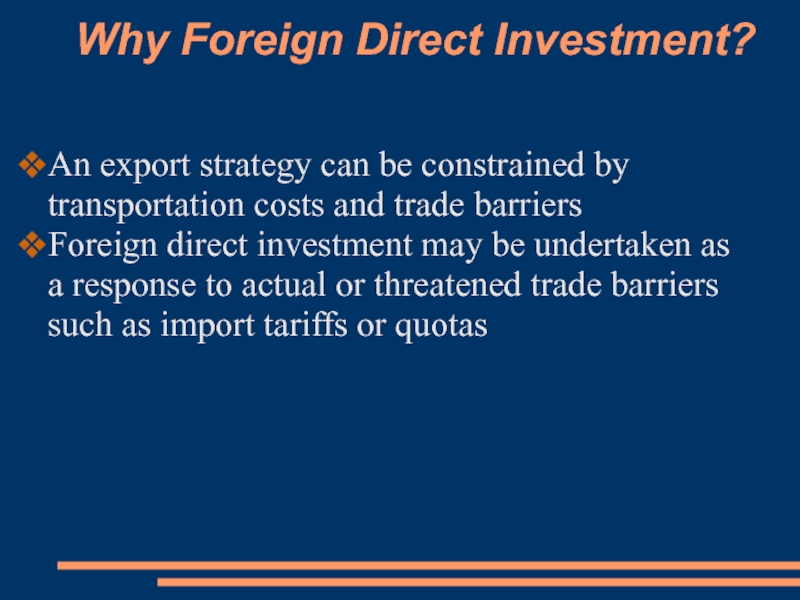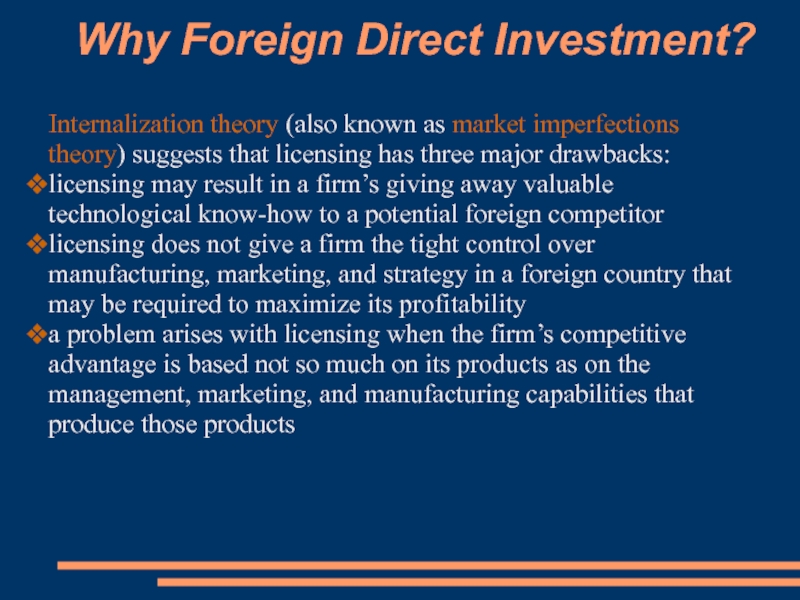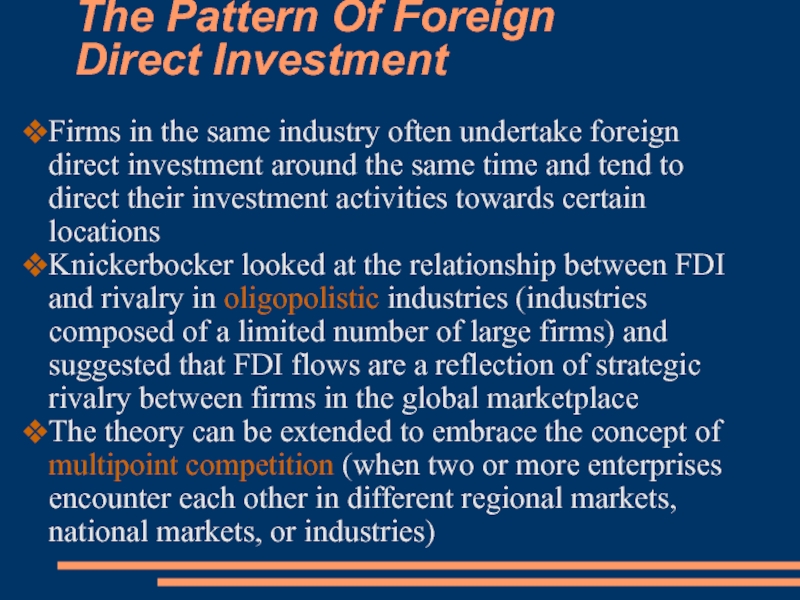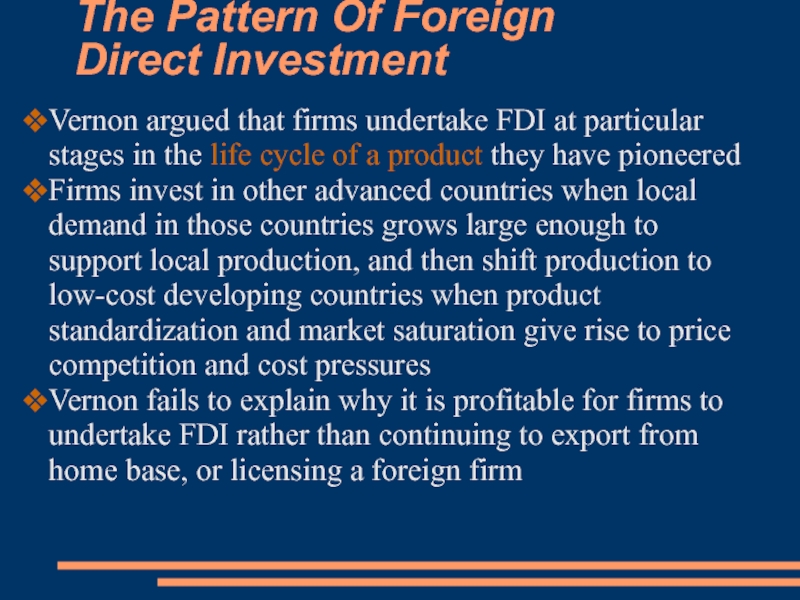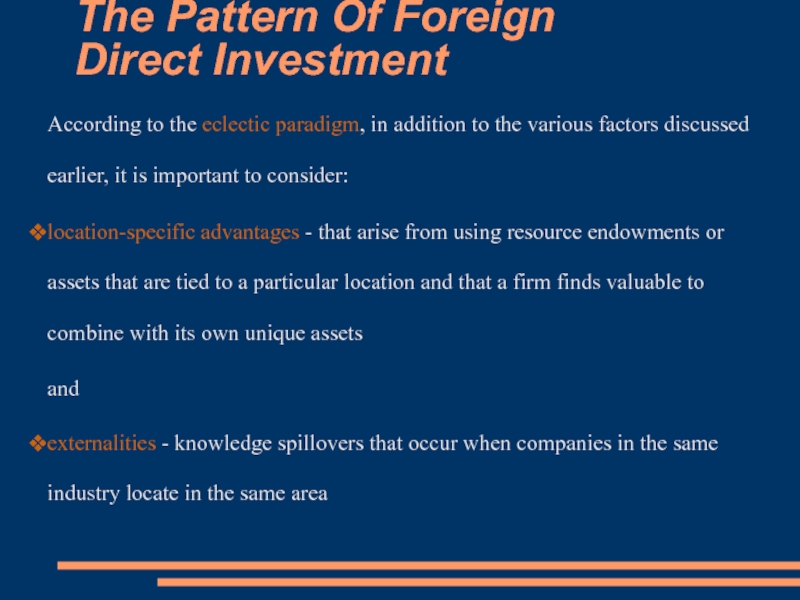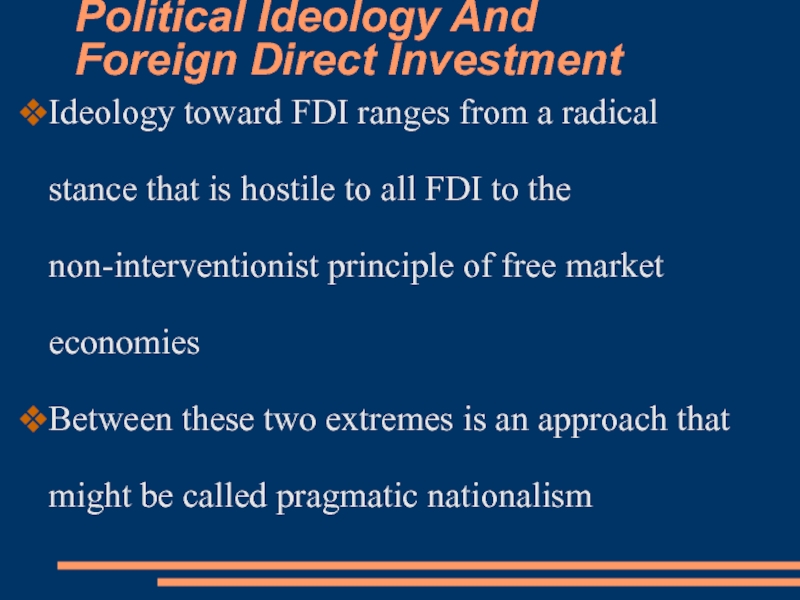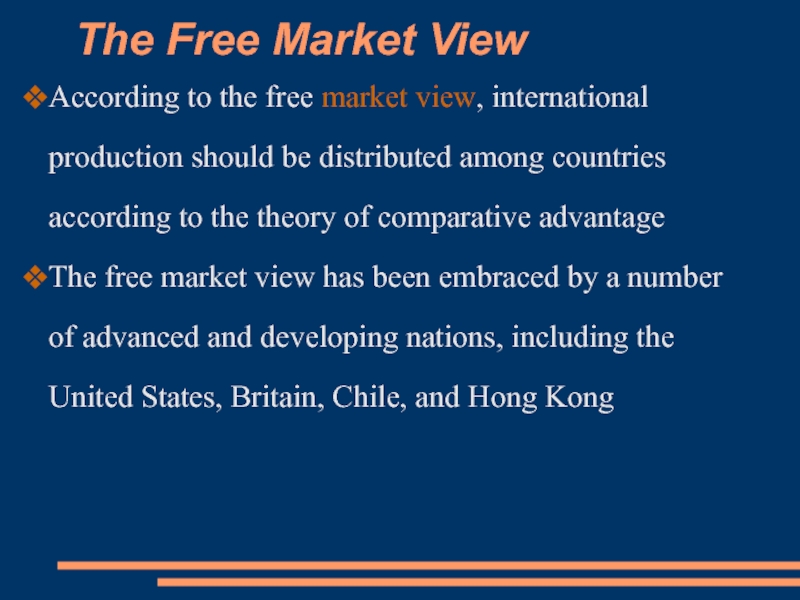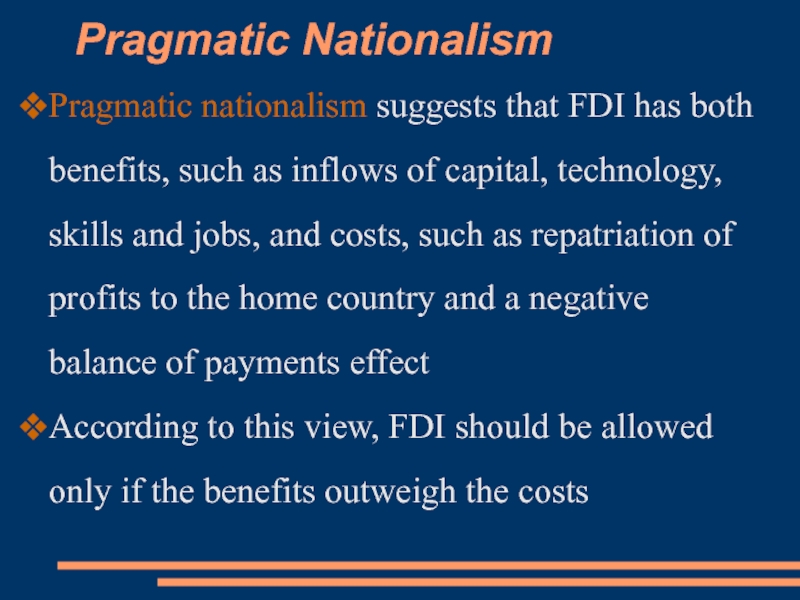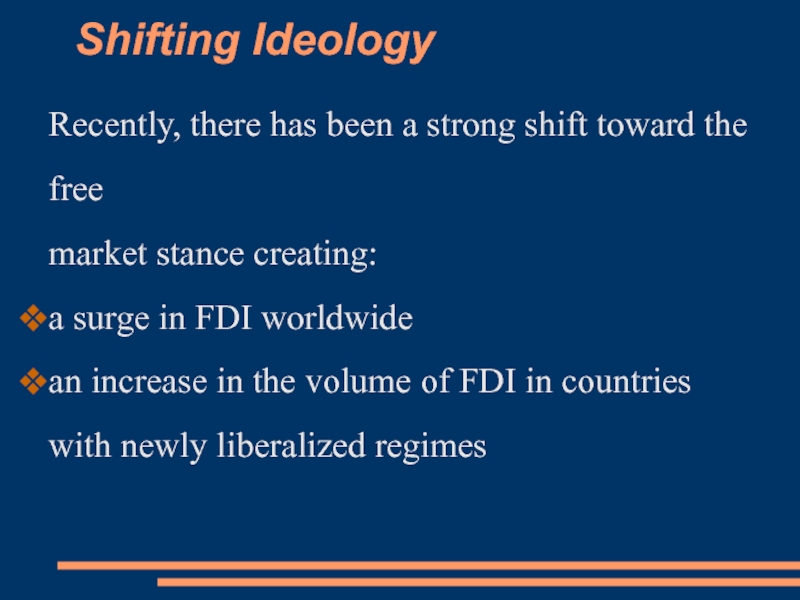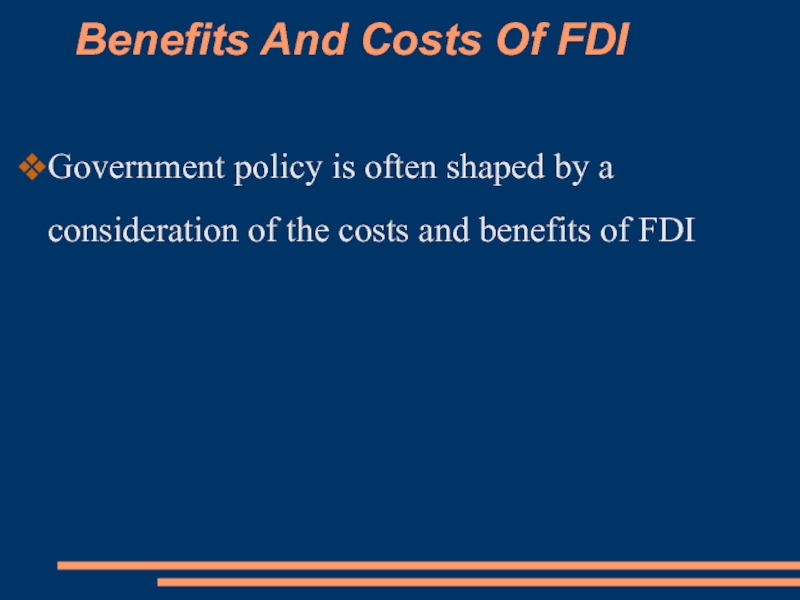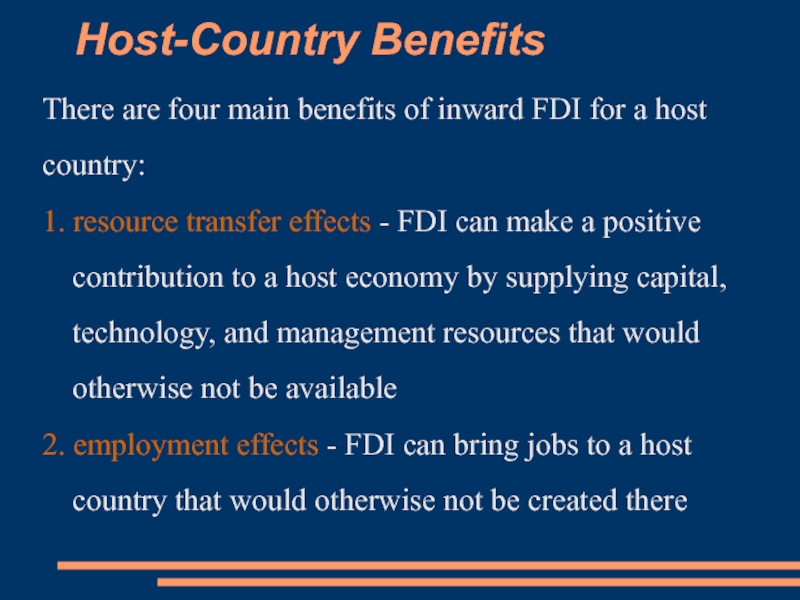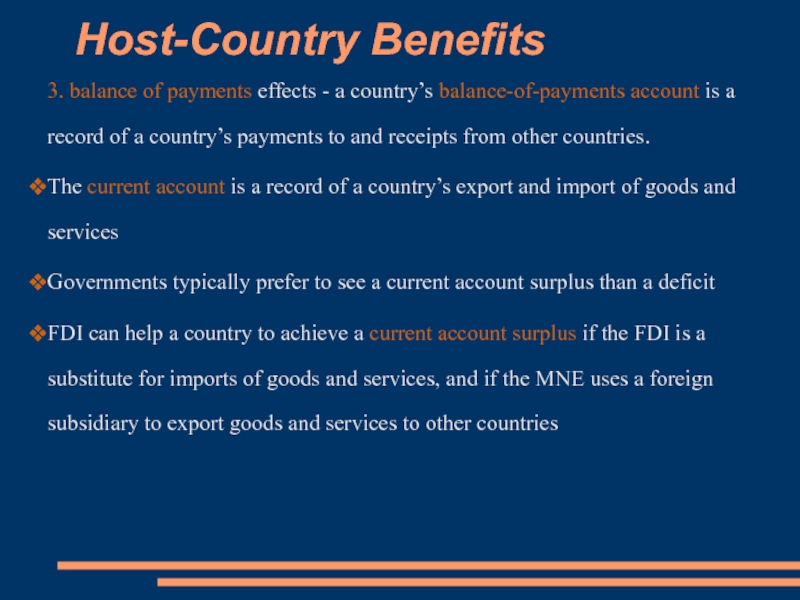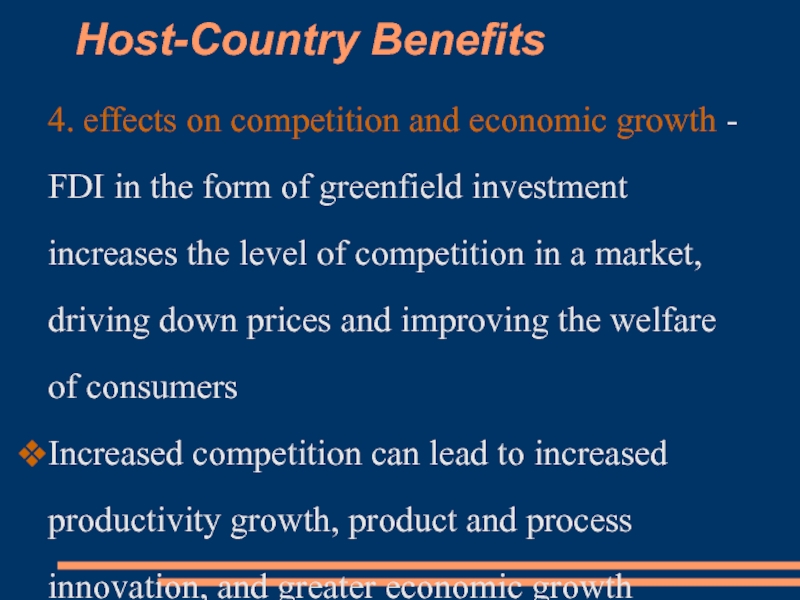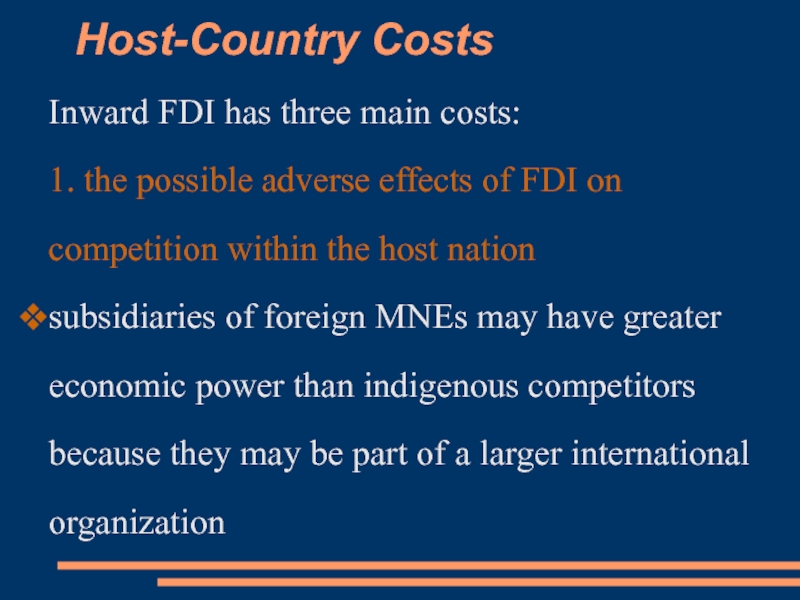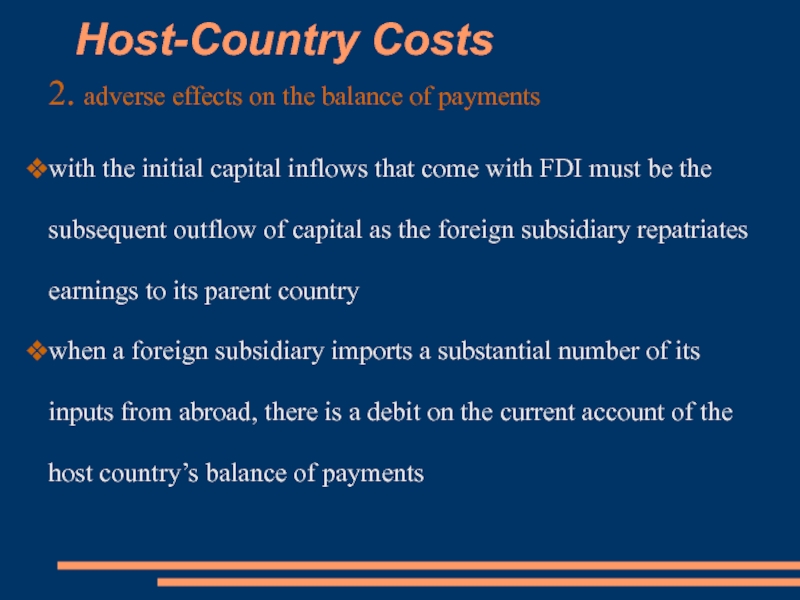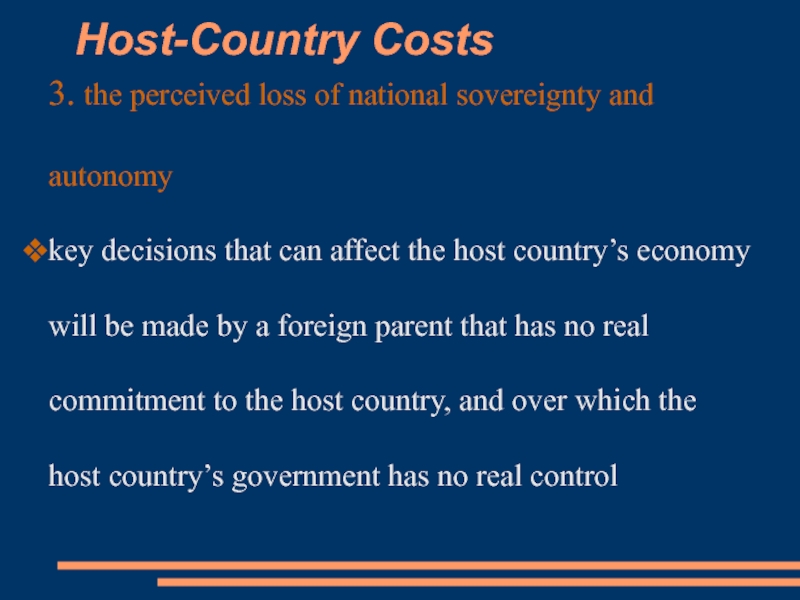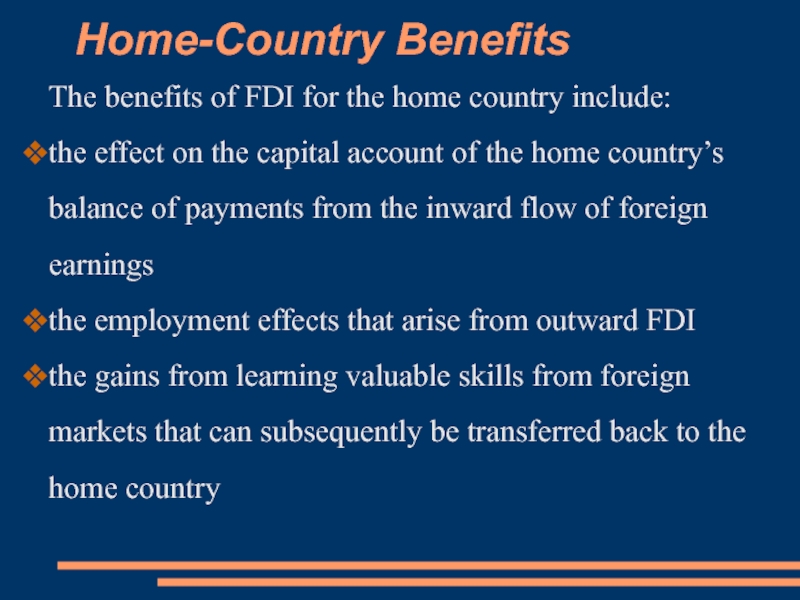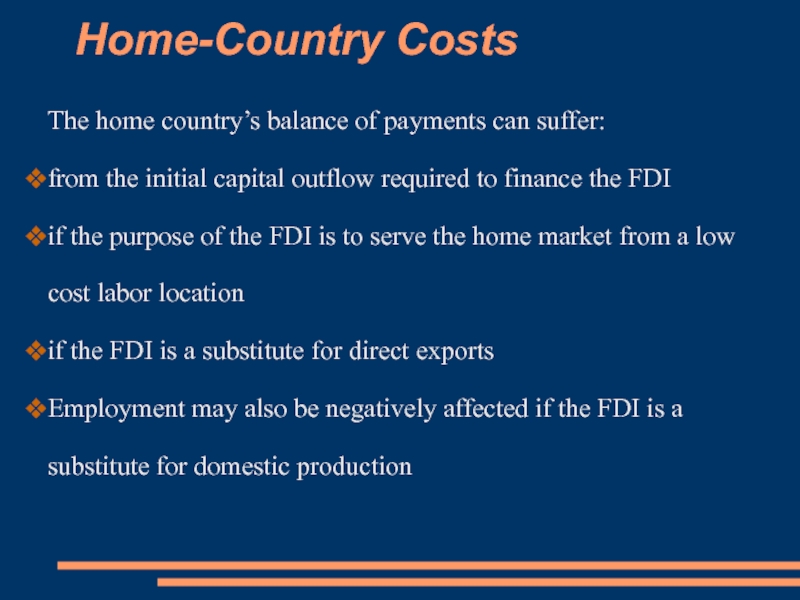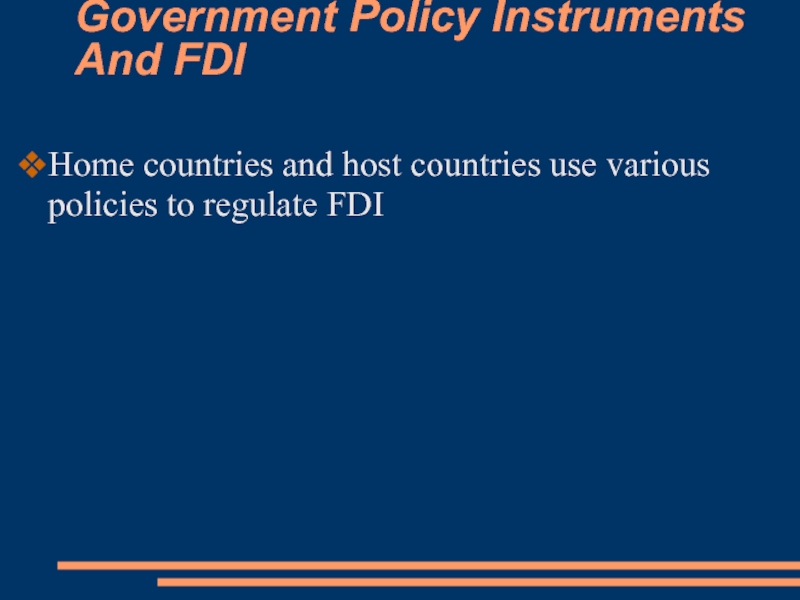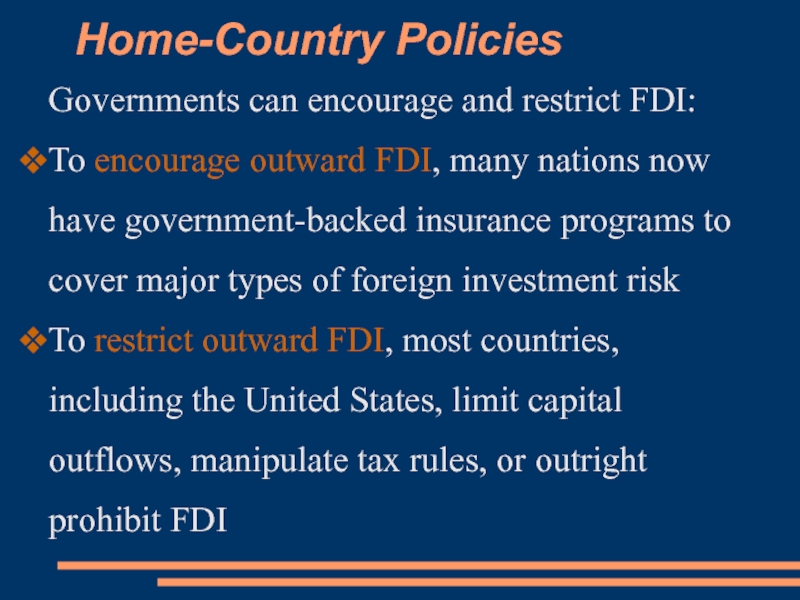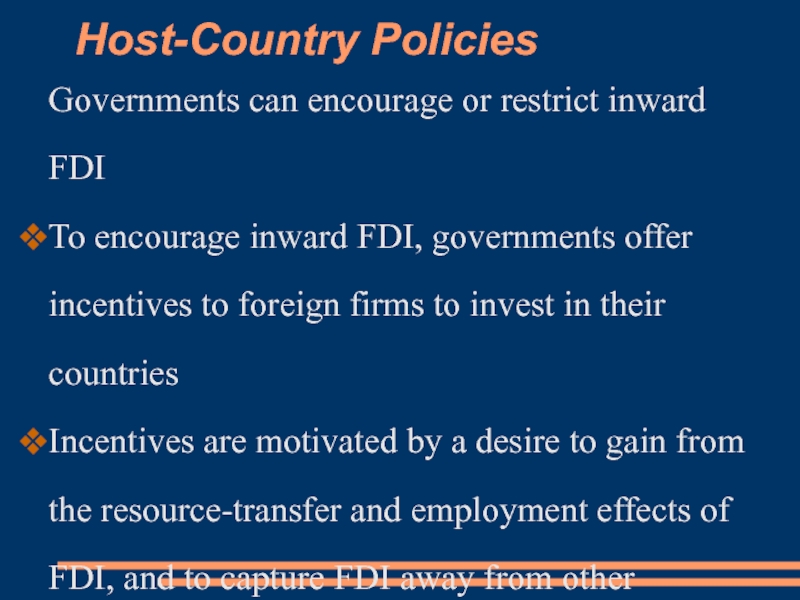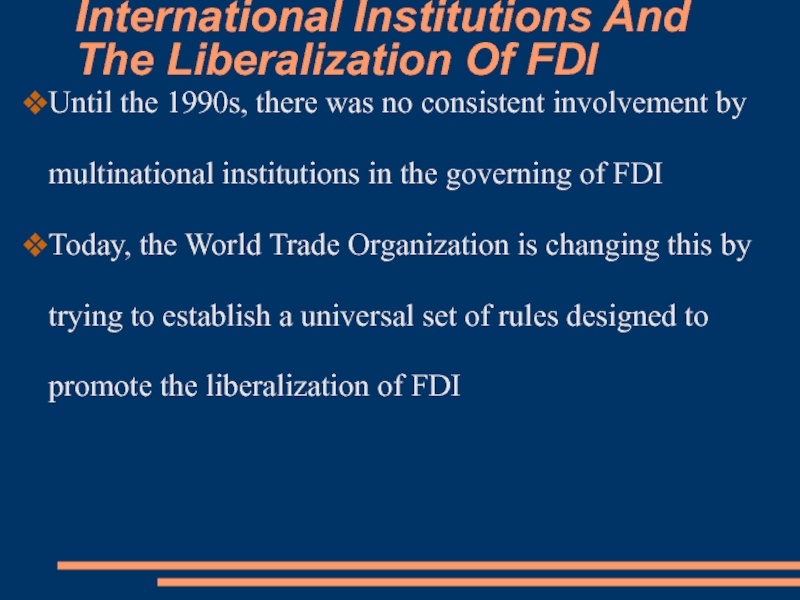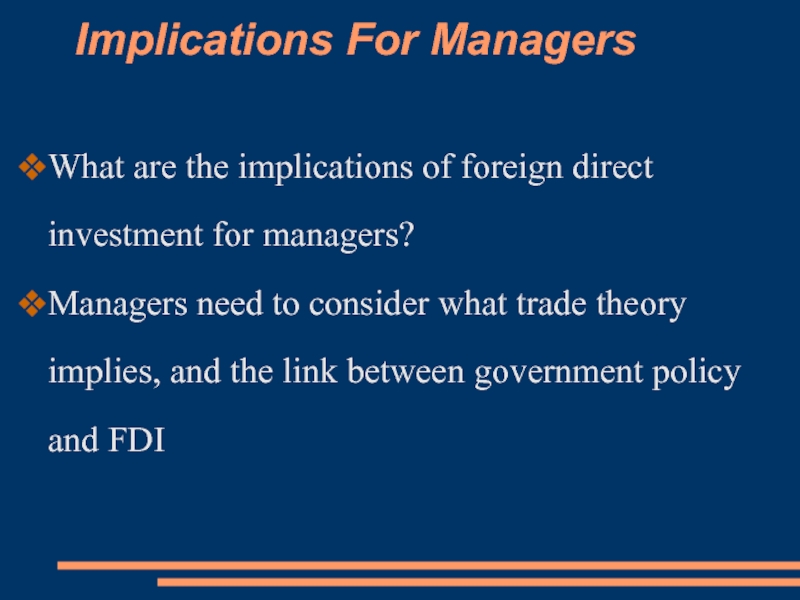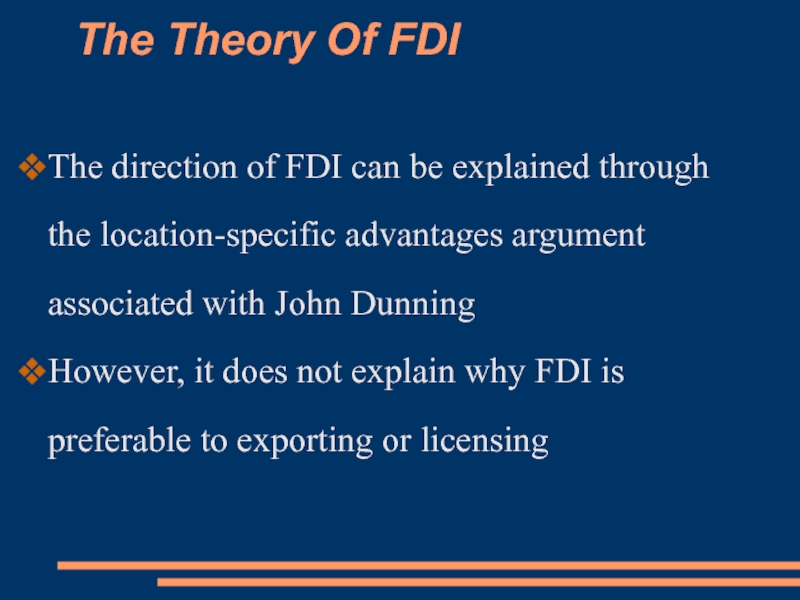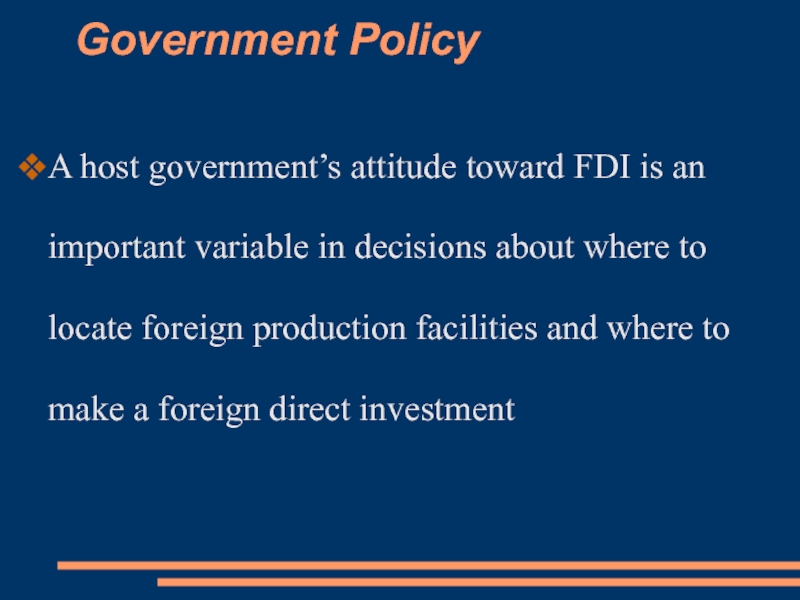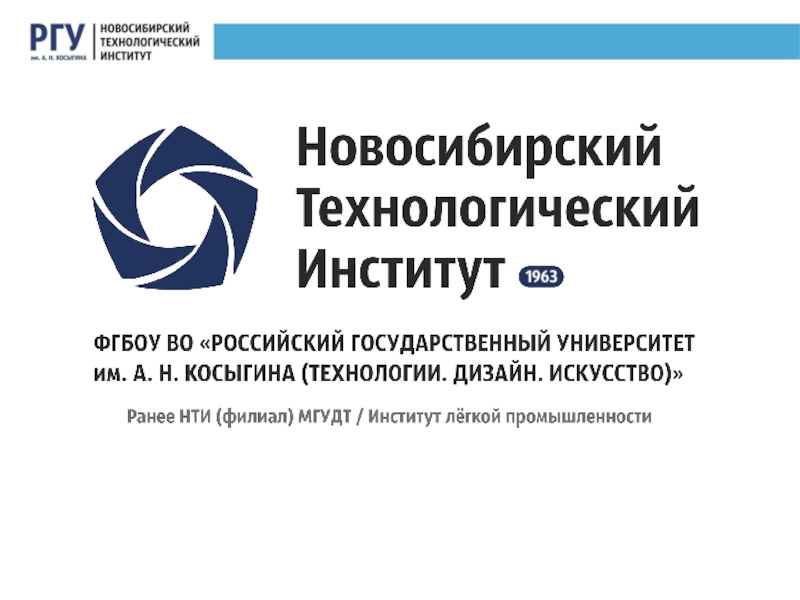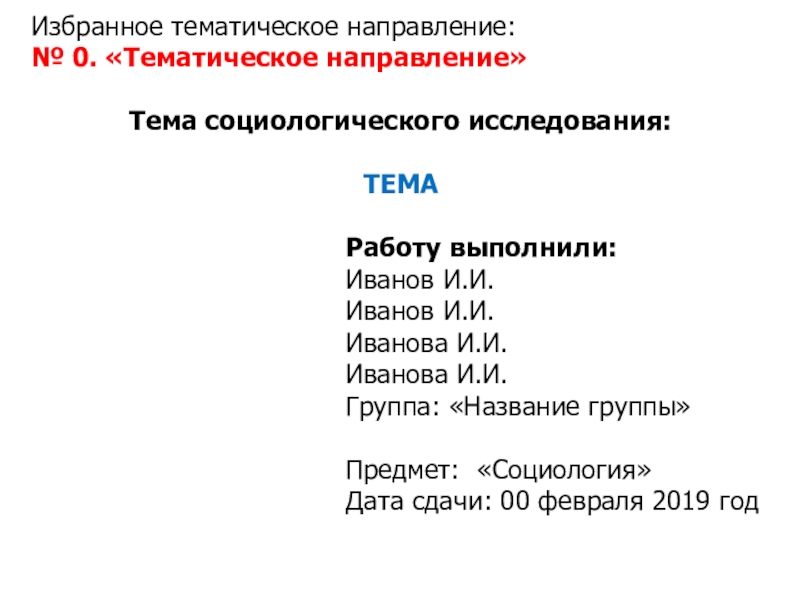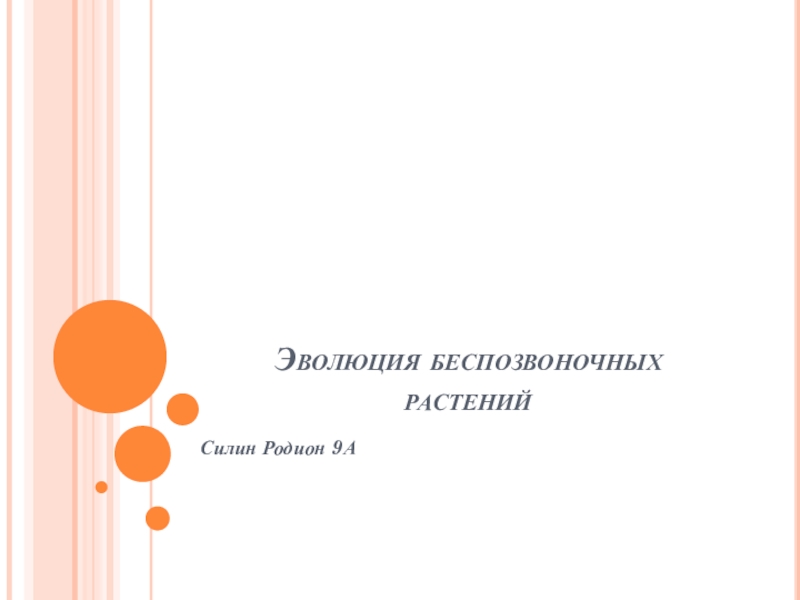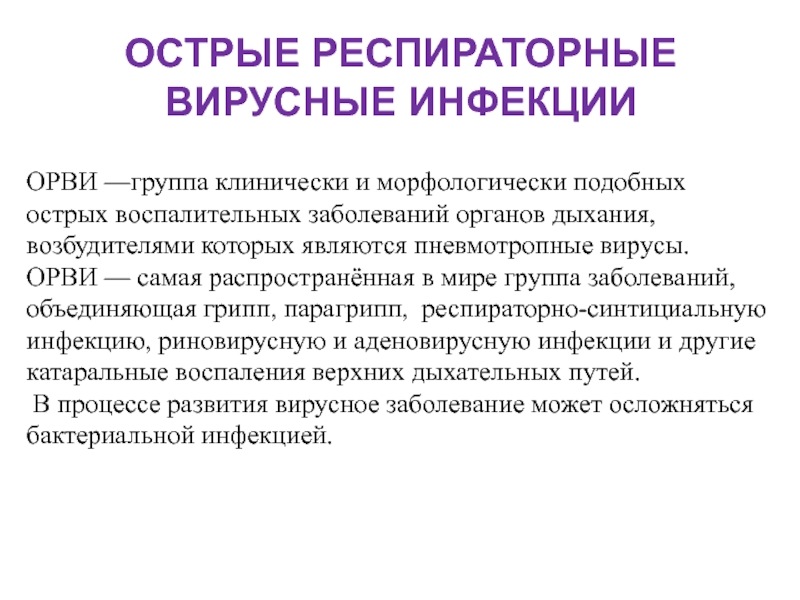Слайд 2Introduction
Foreign direct investment (FDI) occurs when a firm invests directly
in new facilities to produce and/or market in a foreign
country
Once a firm undertakes FDI it becomes a multinational enterprise
FDI can be:
greenfield investments - the establishment of a wholly new operation in a foreign country
acquisitions or mergers with existing firms in the foreign country
Слайд 3Foreign Direct Investment
In The World Economy
The flow of FDI
refers to the amount of FDI undertaken over a given
time period
The stock of FDI refers to the total accumulated value of foreign-owned assets at a given time
Outflows of FDI are the flows of FDI out of a country
Inflows of FDI are the flows of FDI into a country
Слайд 4Trends In FDI
There has been a marked increase in both
the flow and stock of FDI in the world economy
over the last 30 years
FDI has grown more rapidly than world trade and world output because:
firms still fear the threat of protectionism
the general shift toward democratic political institutions and free market economies has encouraged FDI
the globalization of the world economy is having a positive impact on the volume of FDI as firms undertake FDI to ensure they have a significant presence in many regions of the world
Слайд 5Trends In FDI
Figure 7.1: FDI Outflows 1982-2006 ($ billions)
Слайд 6The Direction Of FDI
Most FDI has historically been directed at
the developed nations of the world, with the United States
being a favorite target
FDI inflows have remained high during the early 2000s for the United States, and also for the European Union
South, East, and Southeast Asia, and particularly China, are now seeing an increase of FDI inflows
Latin America is also emerging as an important region for FDI
Слайд 7The Direction Of FDI
Figure 7.3: FDI Inflows by Region ($
billion), 1995-2006
Слайд 8The Direction Of FDI
Gross fixed capital formation summarizes the total
amount of capital invested in factories, stores, office buildings, and
the like
All else being equal, the greater the capital investment in an economy, the more favorable its future prospects are likely to be
So, FDI can be seen as an important source of capital investment and a determinant of the future growth rate of an economy
Слайд 9The Direction Of FDI
Figure 7.4: Inward FDI as a %
of Gross Fixed Capital Formation 1992-2005
Слайд 10The Source Of FDI
Since World War II, the U.S. has
been the largest source country for FDI
The United Kingdom, the
Netherlands, France, Germany, and Japan are other important source countries
Слайд 11The Source Of FDI
Figure 7.5: Cumulative FDI Outflows ($ billions),
1998-2005
Слайд 12The Form Of FDI: Acquisitions
Versus Greenfield Investments
Most cross-border investment
is in the form of mergers and acquisitions rather than
greenfield investments
Firms prefer to acquire existing assets because:
mergers and acquisitions are quicker to execute than greenfield investments
it is easier and perhaps less risky for a firm to acquire desired assets than build them from the ground up
firms believe that they can increase the efficiency of an acquired unit by transferring capital, technology, or management skills
Слайд 13The Shift To Services
FDI is shifting away from extractive industries
and manufacturing, and towards services
The shift to services is
being driven by:
the general move in many developed countries toward services
the fact that many services need to be produced where they are consumed
a liberalization of policies governing FDI in services
the rise of Internet-based global telecommunications networks
Слайд 14Theories Of Foreign Direct Investment
Why do firms invest rather than
use exporting or licensing to enter foreign markets?
Why do firms
from the same industry undertake FDI at the same time?
How can the pattern of foreign direct investment flows be explained?
Слайд 15Why Foreign Direct Investment?
Why do firms choose FDI instead of:
exporting
- producing goods at home and then shipping them to
the receiving country for sale
or
licensing - granting a foreign entity the right to produce and sell the firm’s product in return for a royalty fee on every unit that the foreign entity sells
Слайд 16Why Foreign Direct Investment?
An export strategy can be constrained by
transportation costs and trade barriers
Foreign direct investment may be
undertaken as a response to actual or threatened trade barriers such as import tariffs or quotas
Слайд 17Why Foreign Direct Investment?
Internalization theory (also known as market imperfections
theory) suggests that licensing has three major drawbacks:
licensing may result
in a firm’s giving away valuable technological know-how to a potential foreign competitor
licensing does not give a firm the tight control over manufacturing, marketing, and strategy in a foreign country that may be required to maximize its profitability
a problem arises with licensing when the firm’s competitive advantage is based not so much on its products as on the management, marketing, and manufacturing capabilities that produce those products
Слайд 18The Pattern Of Foreign
Direct Investment
Firms in the same industry
often undertake foreign direct investment around the same time and
tend to direct their investment activities towards certain locations
Knickerbocker looked at the relationship between FDI and rivalry in oligopolistic industries (industries composed of a limited number of large firms) and suggested that FDI flows are a reflection of strategic rivalry between firms in the global marketplace
The theory can be extended to embrace the concept of multipoint competition (when two or more enterprises encounter each other in different regional markets, national markets, or industries)
Слайд 19The Pattern Of Foreign
Direct Investment
Vernon argued that firms undertake
FDI at particular stages in the life cycle of a
product they have pioneered
Firms invest in other advanced countries when local demand in those countries grows large enough to support local production, and then shift production to low-cost developing countries when product standardization and market saturation give rise to price competition and cost pressures
Vernon fails to explain why it is profitable for firms to undertake FDI rather than continuing to export from home base, or licensing a foreign firm
Слайд 20The Pattern Of Foreign
Direct Investment
According to the eclectic paradigm,
in addition to the various factors discussed earlier, it is
important to consider:
location-specific advantages - that arise from using resource endowments or assets that are tied to a particular location and that a firm finds valuable to combine with its own unique assets
and
externalities - knowledge spillovers that occur when companies in the same industry locate in the same area
Слайд 21Political Ideology And
Foreign Direct Investment
Ideology toward FDI ranges from
a radical stance that is hostile to all FDI to
the non-interventionist principle of free market economies
Between these two extremes is an approach that might be called pragmatic nationalism
Слайд 22The Radical View
The radical view traces its roots to Marxist
political and economic theory
It argues that the MNE is an
instrument of imperialist domination and a tool for exploiting host countries to the exclusive benefit of their capitalist-imperialist home countries
Слайд 23The Free Market View
According to the free market view, international
production should be distributed among countries according to the theory
of comparative advantage
The free market view has been embraced by a number of advanced and developing nations, including the United States, Britain, Chile, and Hong Kong
Слайд 24Pragmatic Nationalism
Pragmatic nationalism suggests that FDI has both benefits, such
as inflows of capital, technology, skills and jobs, and costs,
such as repatriation of profits to the home country and a negative balance of payments effect
According to this view, FDI should be allowed only if the benefits outweigh the costs
Слайд 25Shifting Ideology
Recently, there has been a strong shift toward
the free
market stance creating:
a surge in FDI worldwide
an
increase in the volume of FDI in countries with newly liberalized regimes
Слайд 26Benefits And Costs Of FDI
Government policy is often shaped by
a consideration of the costs and benefits of FDI
Слайд 27Host-Country Benefits
There are four main benefits of inward FDI for
a host
country:
1. resource transfer effects - FDI can
make a positive contribution to a host economy by supplying capital, technology, and management resources that would otherwise not be available
2. employment effects - FDI can bring jobs to a host country that would otherwise not be created there
Слайд 28Host-Country Benefits
3. balance of payments effects - a country’s balance-of-payments
account is a record of a country’s payments to and
receipts from other countries.
The current account is a record of a country’s export and import of goods and services
Governments typically prefer to see a current account surplus than a deficit
FDI can help a country to achieve a current account surplus if the FDI is a substitute for imports of goods and services, and if the MNE uses a foreign subsidiary to export goods and services to other countries
Слайд 29Host-Country Benefits
4. effects on competition and economic growth - FDI
in the form of greenfield investment increases the level of
competition in a market, driving down prices and improving the welfare of consumers
Increased competition can lead to increased productivity growth, product and process innovation, and greater economic growth
Слайд 30Host-Country Costs
Inward FDI has three main costs:
1. the possible adverse
effects of FDI on competition within the host nation
subsidiaries
of foreign MNEs may have greater economic power than indigenous competitors because they may be part of a larger international organization
Слайд 31Host-Country Costs
2. adverse effects on the balance of payments
with the
initial capital inflows that come with FDI must be the
subsequent outflow of capital as the foreign subsidiary repatriates earnings to its parent country
when a foreign subsidiary imports a substantial number of its inputs from abroad, there is a debit on the current account of the host country’s balance of payments
Слайд 32Host-Country Costs
3. the perceived loss of national sovereignty and autonomy
key
decisions that can affect the host country’s economy will be
made by a foreign parent that has no real commitment to the host country, and over which the host country’s government has no real control
Слайд 33Home-Country Benefits
The benefits of FDI for the home country include:
the
effect on the capital account of the home country’s balance
of payments from the inward flow of foreign earnings
the employment effects that arise from outward FDI
the gains from learning valuable skills from foreign markets that can subsequently be transferred back to the home country
Слайд 34Home-Country Costs
The home country’s balance of payments can suffer:
from the
initial capital outflow required to finance the FDI
if the purpose
of the FDI is to serve the home market from a low cost labor location
if the FDI is a substitute for direct exports
Employment may also be negatively affected if the FDI is a substitute for domestic production
Слайд 35International Trade Theory
And FDI
International trade theory suggests that home
country concerns about the negative economic effects of offshore production
(FDI undertaken to serve the home market) may not be valid
Слайд 36Government Policy Instruments
And FDI
Home countries and host countries use
various policies to regulate FDI
Слайд 37Home-Country Policies
Governments can encourage and restrict FDI:
To encourage outward FDI,
many nations now have government-backed insurance programs to cover major
types of foreign investment risk
To restrict outward FDI, most countries, including the United States, limit capital outflows, manipulate tax rules, or outright prohibit FDI
Слайд 38Host-Country Policies
Governments can encourage or restrict inward FDI
To encourage inward
FDI, governments offer incentives to foreign firms to invest in
their countries
Incentives are motivated by a desire to gain from the resource-transfer and employment effects of FDI, and to capture FDI away from other potential host countries
To restrict inward FDI, governments use ownership restraints and performance requirements
Слайд 39International Institutions And
The Liberalization Of FDI
Until the 1990s, there
was no consistent involvement by multinational institutions in the governing
of FDI
Today, the World Trade Organization is changing this by trying to establish a universal set of rules designed to promote the liberalization of FDI
Слайд 40Implications For Managers
What are the implications of foreign direct investment
for managers?
Managers need to consider what trade theory implies, and
the link between government policy and FDI
Слайд 41The Theory Of FDI
The direction of FDI can be explained
through the location-specific advantages argument associated with John Dunning
However, it
does not explain why FDI is preferable to exporting or licensing
Слайд 42Government Policy
A host government’s attitude toward FDI is an important
variable in decisions about where to locate foreign production facilities
and where to make a foreign direct investment
